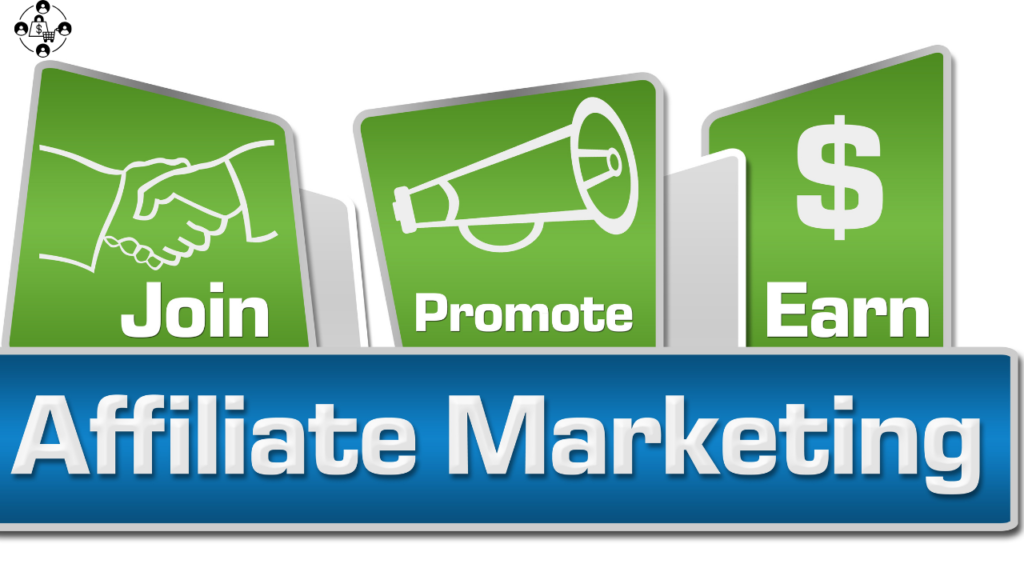In today’s fast-paced world, digital marketing plays a key role in connecting businesses with their target audiences. It is the process of promoting products or services through online platforms like websites, social media, search engines, and email. Unlike traditional marketing, digital marketing allows businesses to reach people directly where they spend most of their time: online.
Search engine optimization (SEO), pay-per-click (PPC), content marketing, social media marketing, and other tactics are all included in digital marketing. Each type has its own strengths, making it important for businesses to understand which one fits their goals best. By mastering the different types of digital marketing, companies can attract more customers, build brand awareness, and boost sales.

Importance Of Understanding Different Types Of Digital Marketing For Businesses And Markets
Understanding the different types of digital marketing is essential for any business that wants to succeed in today’s competitive market. Here’s why:
Tailored Strategies For Unique Goals
Each business has different goals. For example, a small business might want to increase local visibility, while a large company might aim to expand its global reach. Knowing the various types of digital marketing helps businesses choose the right strategies to meet their specific needs.
Reaching The Right Audience
Different types of digital marketing target different audiences. For instance, social media marketing is great for reaching younger, tech-savvy users, while email marketing works well for nurturing long-term relationships with existing customers. By understanding these types, businesses can focus their efforts on platforms where their target audience is most active.
Economical Promotion
Digital marketing may be less expensive than conventional techniques. However, without understanding the different types, businesses may waste money on strategies that don’t deliver results. For example, investing in PPC might work for an e-commerce business, but a nonprofit might benefit more from organic content marketing.
Staying Competitive
Most businesses today use digital marketing in some form. To stay competitive, it’s important to understand what works for your industry. By analyzing competitors and learning about various types of digital marketing, businesses can innovate and find new ways to stand out.
Adapting To Market Trends
The digital world is constantly evolving, with new tools, platforms, and trends emerging regularly. Understanding different types of digital marketing helps businesses stay flexible and ready to adapt to changes, such as the rise of influencer marketing or AI-powered advertising.
Simplifying the Approach
For businesses new to digital marketing, starting with one or two types and gradually expanding is a smart approach. For example, focus on building a strong presence with social media marketing and SEO before exploring advanced strategies like affiliate marketing or marketing automation.
By understanding the various types of digital marketing, businesses can create tailored strategies that align with their goals, connect with their audience, and maximize their online potential. Whether you’re a small startup or a large enterprise, mastering digital marketing is no longer optional—it’s essential for growth and success.
Types of Digital MarketingTop 10 Digital Marketing Jobs in High Demand-the ultimate guide
Digital marketing is a powerful way for businesses to reach their audience online. By exploring the types of digital marketing, you can increase your brand’s visibility, connect with customers, and drive growth. Below, we dive into the main types of digital marketing, with actionable tips, real-world examples, and insights into the future of this dynamic field.
Search Engine Optimization (SEO)
Definition: SEO is the process of optimizing your website so it ranks higher on search engines like Google. Potential clients will find you more easily if your SEO is strong.

Actionable Tips:
For Beginners: Start by researching keywords that match your business. To locate keywords associated with your goods or services, use tools such as Google Keyword Planner.
For Advanced Marketers: Focus on improving your site’s mobile-friendliness and increasing its page load speed to boost rankings.
Real Example: A local bakery in Toronto uses local keywords like “best cakes in Toronto” to rank higher on Google. They also get local food bloggers to link back to their website, which improves their authority and rankings.
Benefits:
Drive free traffic to your website.
Build trust with users who find your site through search engines.
Content Marketing
Definition: Content marketing involves creating valuable content, such as blog posts, videos, or infographics, to attract and engage an audience.

Actionable Tips:
For Beginners: Write blog posts or create videos answering common questions your customers have. For example, if you run a fitness store, write a blog post titled “Top 10 Home Workouts with Minimal Equipment.”
For Intermediate Marketers: Repurpose content. If you’ve already created a blog post, turn it into an infographic, video, or social media post to maximize its reach.
Case Study: A fitness brand creates a blog post titled “Top 10 Home Workouts” and pairs it with a video. This combination attracts viewers looking for fitness tips, leading to an increase in product sales.
Benefits:
makes you a recognized expert in your industry.
Encourages repeat visits to your website.
Social Media Marketing (SMM)
Definition: Social media marketing focuses on promoting your business through platforms like Facebook, Instagram, Twitter, and TikTok to connect with customers where they already spend time.

Actionable Tips:
For Beginners: Start by posting regularly on one platform (e.g., Instagram) and engage with your followers through comments and direct messages.
For Advanced Marketers: Experiment with Instagram ads or Twitter polls to engage your audience further.
Real Example: A fashion brand posts daily Instagram stories showcasing different outfits. They then run Facebook ads targeting fashion enthusiasts, which boosts sales.
Benefits:
Builds brand awareness and engagement.
makes use of shares, likes, and comments to engage your audience.
Pay-Per-Click Advertising (PPC)
Definition: PPC allows businesses to run ads on search engines or social media, paying a fee each time someone clicks on an ad.

Actionable Tips:
For Beginners: Start with Google Ads. Set a small budget and focus on keywords that are specific to your business.
For Intermediate Marketers: Optimize your landing pages to increase conversion rates when users click on your ads.
Mini Case Study: An online shoe store runs a Google ad for “best running shoes.” Every time someone clicks, the store pays a small fee, but the clicks lead to sales, making the ads profitable.
Benefits:
Get quick visibility with paid ads.
Target a highly specific audience.
Email Marketing
Definition: Email marketing is sending targeted messages directly to people’s inboxes to keep them engaged with your brand or promote your products.

Actionable Tips:
For Beginners: Start by sending a welcome email with a special offer, like a discount for first-time subscribers.
For Advanced Marketers: Segment your email list and send personalized emails based on user behavior, like abandoned cart emails or product recommendations.
Real Example: A clothing store sends a 10% discount email to new subscribers, which encourages them to make their first purchase.
Benefits:
High return on investment (ROI).
Builds a direct connection with customers.
Affiliate Marketing
Definition: Affiliate marketing is when you partner with someone to promote your product in exchange for a commission on each sale made through their link.

Actionable Tips:
For Beginners: Find influencers or bloggers who align with your brand and offer them a commission for promoting your product.
For Advanced Marketers: Create an affiliate program with specific tools, like tracking links and dashboards, to better manage your affiliates.
Real Example: An online fitness store partners with an influencer who shares a special link for followers to buy gear. Each time a customer makes a purchase via the influencer’s link, they receive a commission.
Benefits:
Pay only for actual sales.
Reach new audiences through affiliates.
Influencer Marketing
Definition: Influencer marketing involves partnering with influencers who have large social media followings to promote your product.

Actionable Tips:
For Novices: Determine which micro-influencers appeal to your target market. Begin with a modest budget and monitor the outcomes.
For Advanced Marketers: Work with top influencers to create exclusive product lines or collaborations that drive more engagement.
Mini Case Study: A skincare brand partners with an influencer who shares a video about their products. This leads to a noticeable spike in website traffic and sales.
Benefits:
Trust and credibility through influencer endorsements.
Access to large, engaged audiences.
Video Marketing
Definition: Using videos to advertise your products or describe how they operate is known as video marketing. Videos can be shared on YouTube, Instagram, or your website.

Actionable Tips:
For Beginners: Create simple how-to videos explaining your products or services.
For Advanced Marketers: Produce product demonstration videos and invest in high-quality production to engage your audience.
Real Example: A home appliance company creates a YouTube video showing how to set up and use a new coffee machine. The video educates potential buyers, increasing the likelihood of a purchase.
Benefits:
Compared to text or photos, videos are more interesting and viral.
Helps potential customers understand your products better.
Current Trends in Digital Marketing
Being ahead of trends is essential to remaining competitive as digital marketing continues to change.
Here are some emerging techniques to watch:

AI and Automation: Automating tasks like email marketing and customer service with AI can save time and improve efficiency.
Voice Search Optimization: As more people use voice assistants, optimizing for voice search will become crucial for SEO strategies.
Interactive Content: Quizzes, polls, and interactive videos are becoming more popular in engaging audiences.
conclusion
By understanding and implementing different types of digital marketing, you can significantly boost your business’s visibility and success. Whether you’re just getting started or looking to improve your existing strategy, each of these techniques plays a role in building a successful online presence.
Ready to start your digital marketing journey? Explore our beginner-friendly guides and take your first step today!
Which digital marketing strategy are you most interested in learning about? Comment below!
By applying these actionable tips and keeping up with current trends, you’ll be on your way to mastering the types of digital marketing and seeing measurable results.

🎵 Harmonic brilliance! Sprunki orchestrates your creative symphony.